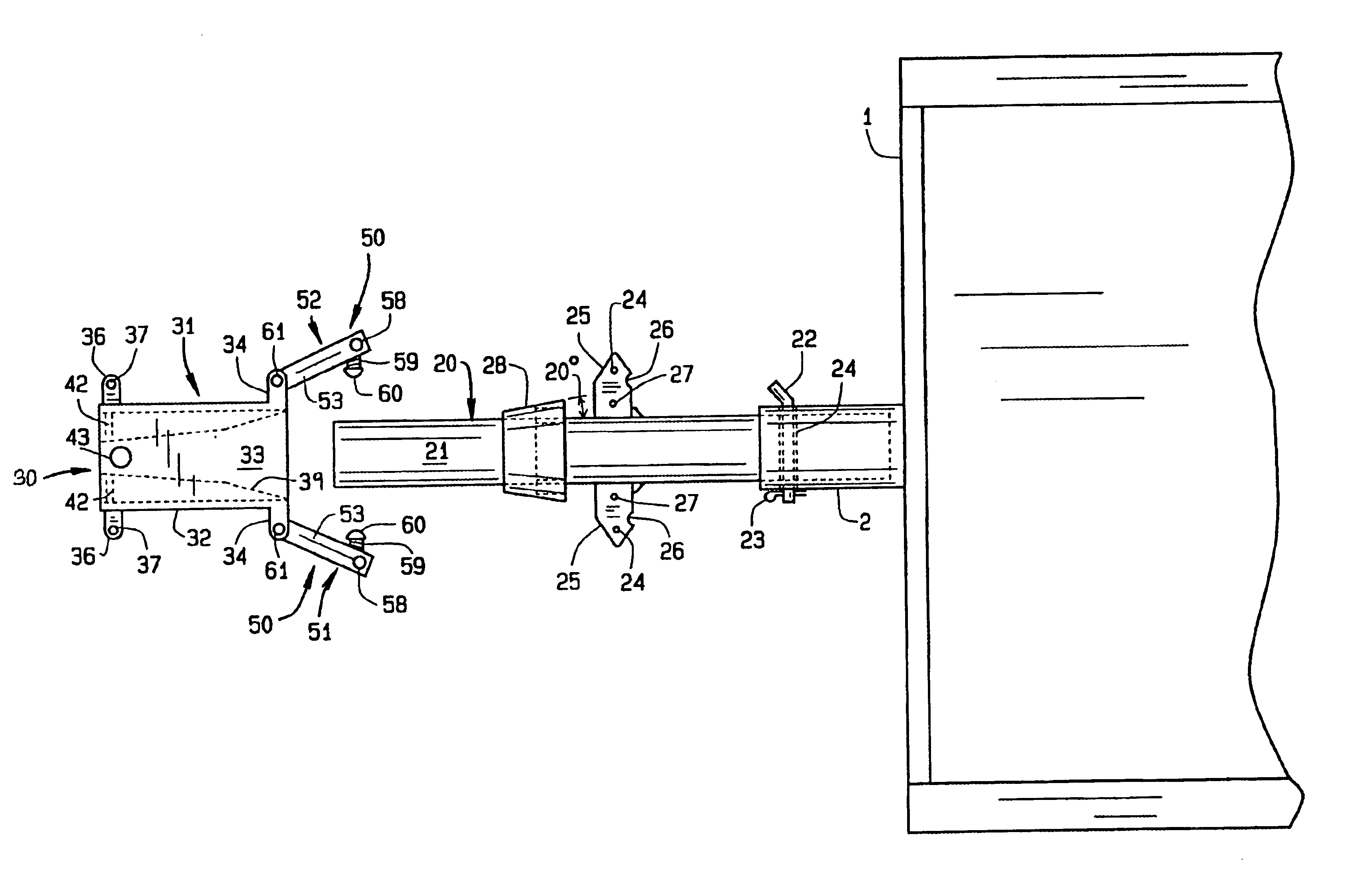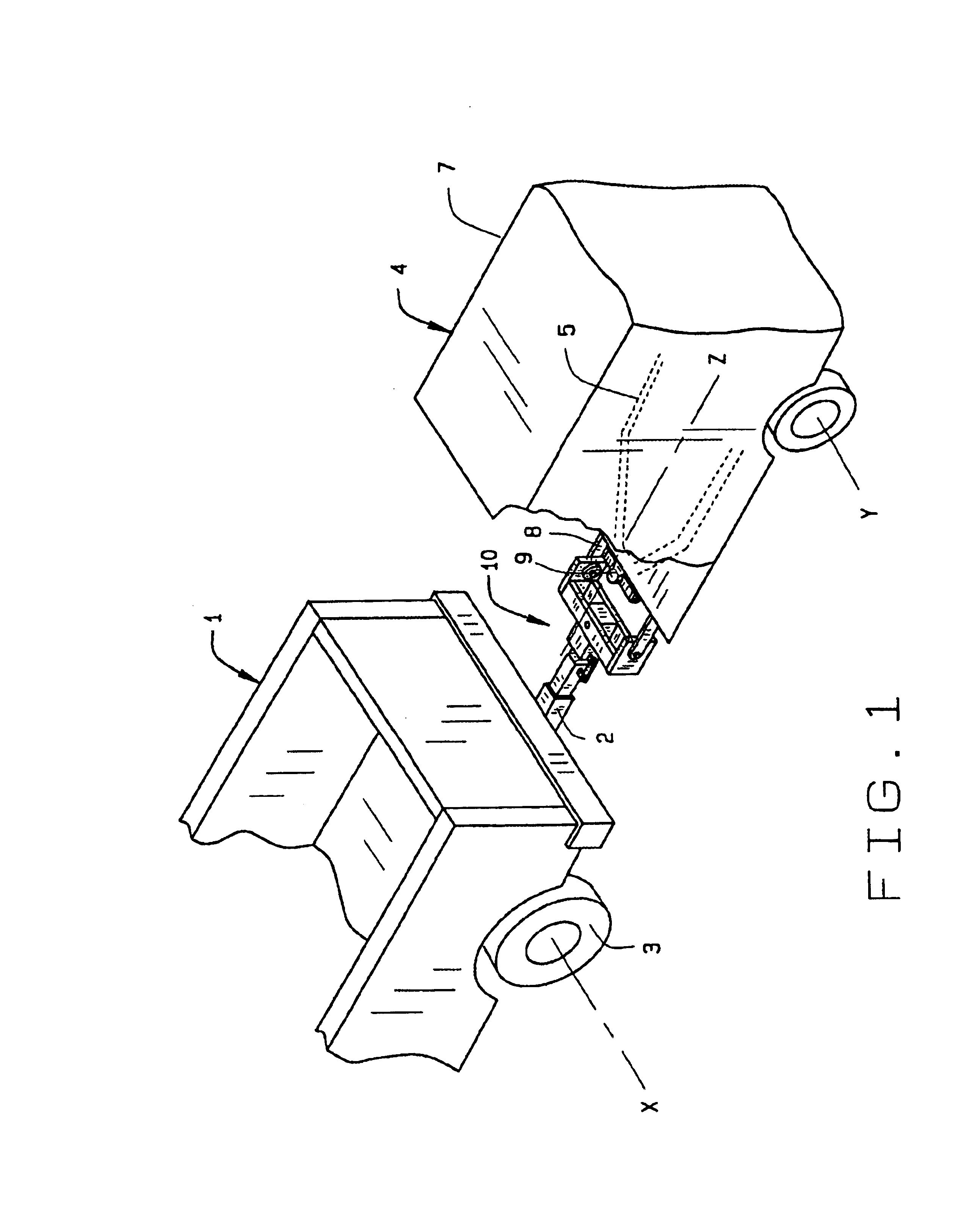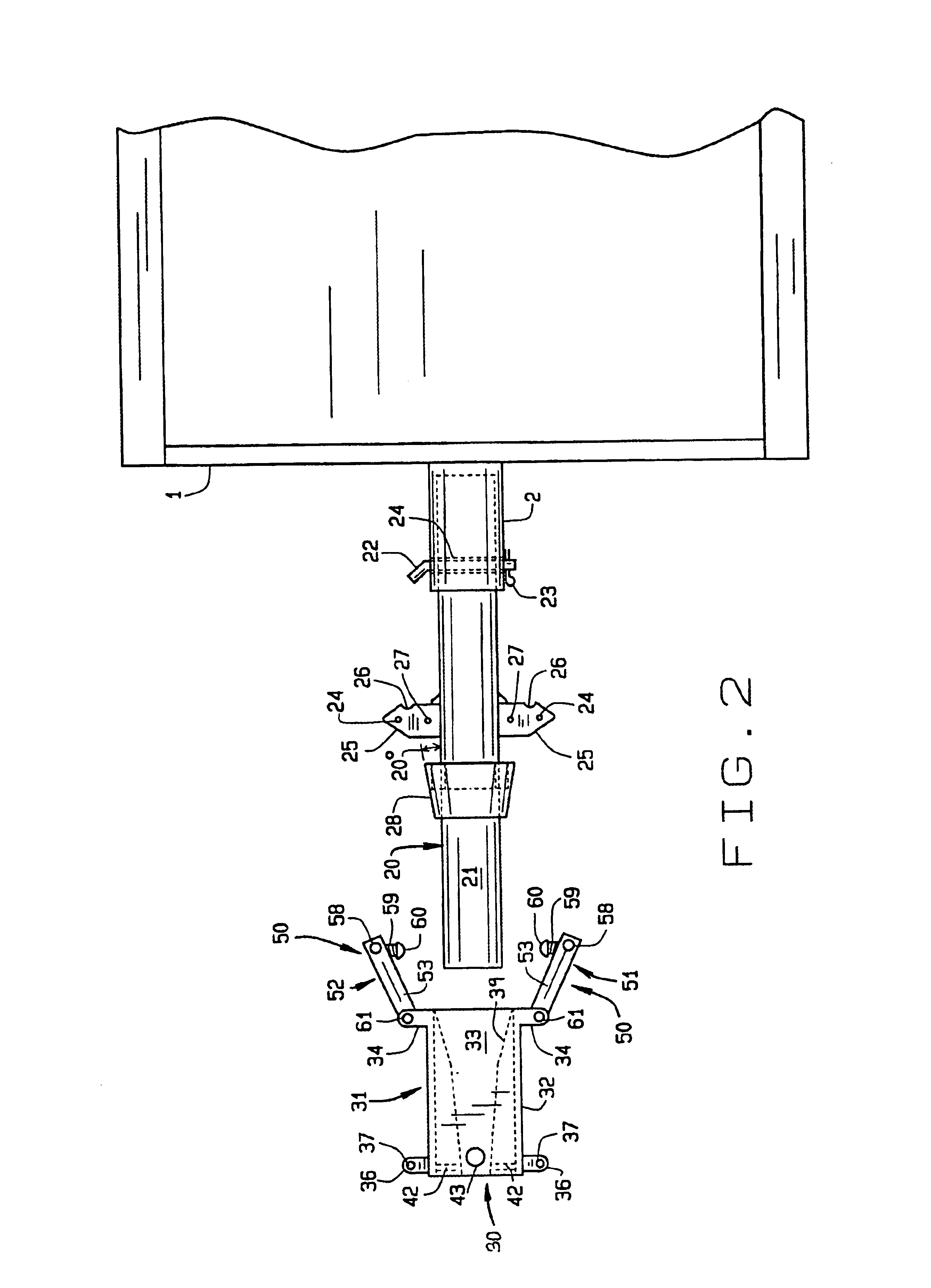Trailer hitch with separated functions
a technology of separating functions and trailers, applied in automatic initiation, braking systems, transportation and packaging, etc., can solve the problems of affecting steering, braking, control, overall vehicle performance, and increasing tongue weight, and does not solve the problem of side-to-side movement of trailers or sway, and is commonly called fishtail sway
- Summary
- Abstract
- Description
- Claims
- Application Information
AI Technical Summary
Benefits of technology
Problems solved by technology
Method used
Image
Examples
Embodiment Construction
The following detailed description illustrates the invention by way of example and not by way of limitation. The description clearly enables one skilled in the art to make and use the invention, describes several embodiments, adaptations, variations, alternatives, and uses of the invention, including what is presently believed to be the best mode of carrying out the invention.
Referring now to the drawings, particularly FIG. 1, a tow vehicle 1 is coupled to a trailer 4 with a hitch assembly 10 of the present invention. It will be appreciated by those skilled in the art that the tow vehicle 1 can be any conventional automobile, a van, or truck such as the pickup shown in FIG. 1. Further, as used in the specification and the claims, the term trailer is intended to include any type of towable device or vehicle that can be pulled behind or trails a tow vehicle. The tow vehicle 1 includes rear wheels 3 which revolve about an axis X. The tow vehicle 1 includes a conventional hitch receiver...
PUM
 Login to View More
Login to View More Abstract
Description
Claims
Application Information
 Login to View More
Login to View More - R&D
- Intellectual Property
- Life Sciences
- Materials
- Tech Scout
- Unparalleled Data Quality
- Higher Quality Content
- 60% Fewer Hallucinations
Browse by: Latest US Patents, China's latest patents, Technical Efficacy Thesaurus, Application Domain, Technology Topic, Popular Technical Reports.
© 2025 PatSnap. All rights reserved.Legal|Privacy policy|Modern Slavery Act Transparency Statement|Sitemap|About US| Contact US: help@patsnap.com



